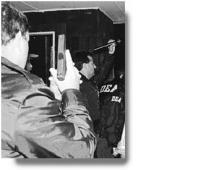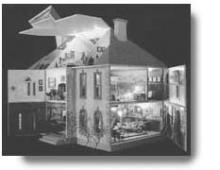Three SoFo Authors
Three SoFo Authors

The South Fork Natural History Society will hold a book party and signing to celebrate the publication of three books by SoFo members: "The Pictorial Guide to the Living Primates" by Noel Rowe, a nature photographer, "Winds of the Fish's Tail" by Richard Hendrickson, a naturalist and weatherman, and "Winged" by George Held, a poet.
The reception will be from noon to 2 p.m. on Saturday at the Vered Gallery in East Hampton, which is itself displaying an exhibit of nature photography and painting: "Nature at Its Best."
Mr. Rowe is director of Primate Conservation Incorporated, a foundation that funds field research of primates in their natural habitat. He has traveled all over the world to photograph mountain gorillas in Zaire, langurs in India, lemurs in Madagascar, and snub-nosed monkeys in China.
Mr. Hendrickson has been observing weather for the National Weather Service in Albany from his farm in Bridgehampton since the 1930s. His book provides a wealth of information about hurricanes, northeasters, beach erosion, blizzards, and summer heat on the South Fork.
"Winged" is Mr. Held's first chapbook of poems, many of which grew out of observation of his Sag Harbor garden. He teaches literature and creative writing at Queens College and is co-editor of The Ledge, a poetry and fiction magazine.



